Family Literacy Night Kit Editable for 2nd Grade
Having a enshroud of go-to literacy activities that are meaningful, flexible, and able to be completed past students independently is a teacher necessity. The all-time literacy centers build autonomy, help students practice fundamental skills, and free y'all up to teach minor groups or requite support elsewhere. We've pulled together this long listing and then you lot tin have plenty of unproblematic options at your fingertips.
one. "Feed" the mini trash cans.

Whether you inquire students to sight words, messages, pictures or words by phonetic pattern, at that place'due south just something about a trash can with a swinging hat that makes the chore much more than exciting!
Source: @msbendersclassroom
2. Spell words with magnetic letters.
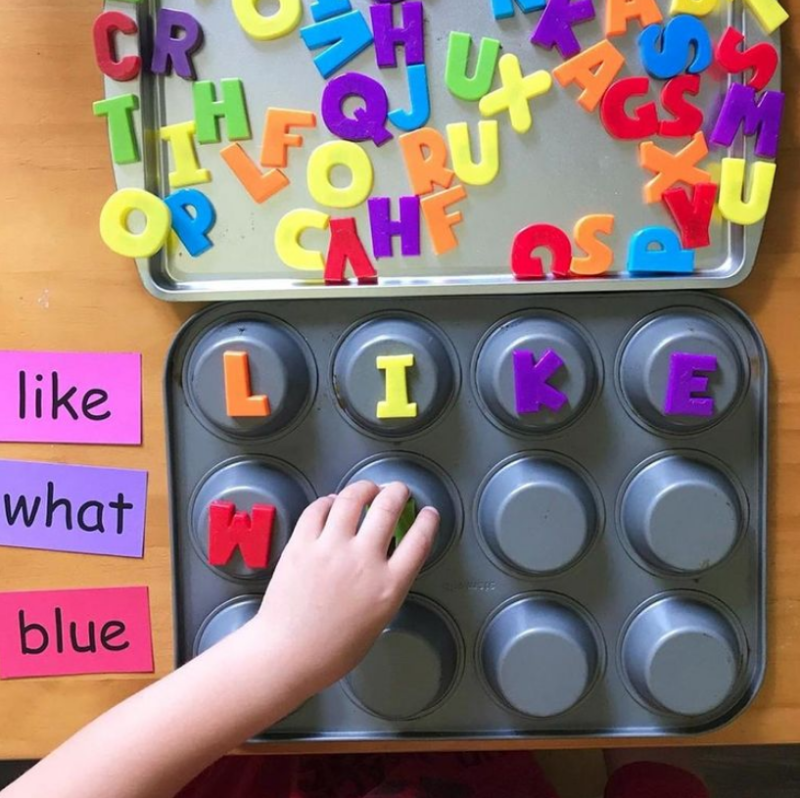
Yes, this is an old standby, but wait … a muffin tin?! So smart.
Source: @playdough2plato
3. Write before-and-after reading sticky notes.
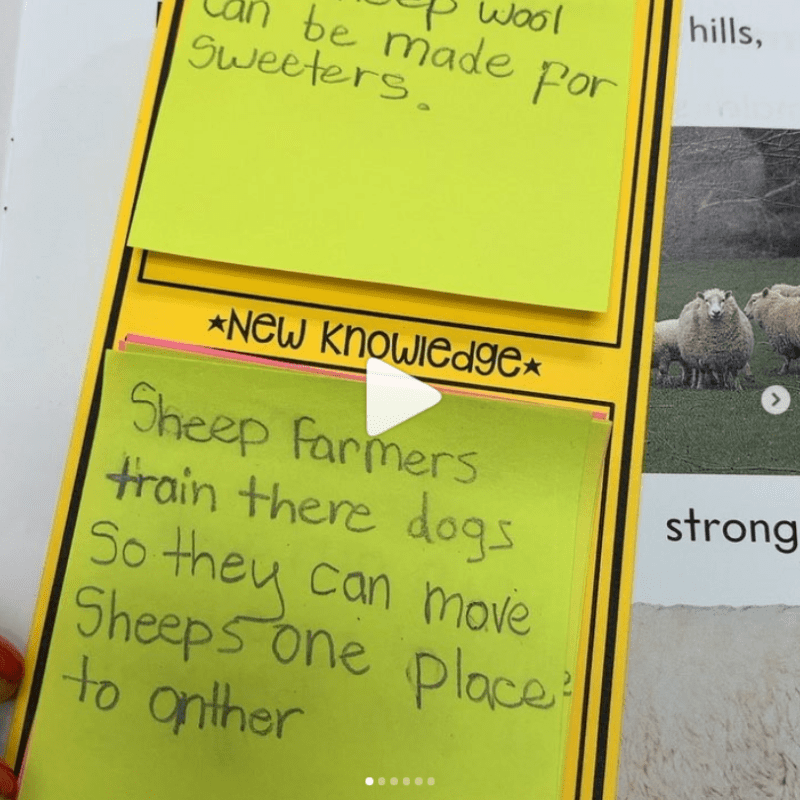
We love this idea for recording prior and new background knowledge on a topic, but it's easily adaptable to other comprehension strategies, as well.
Source: @missps_style
4. Curlicue. Say. Cover. Repeat.
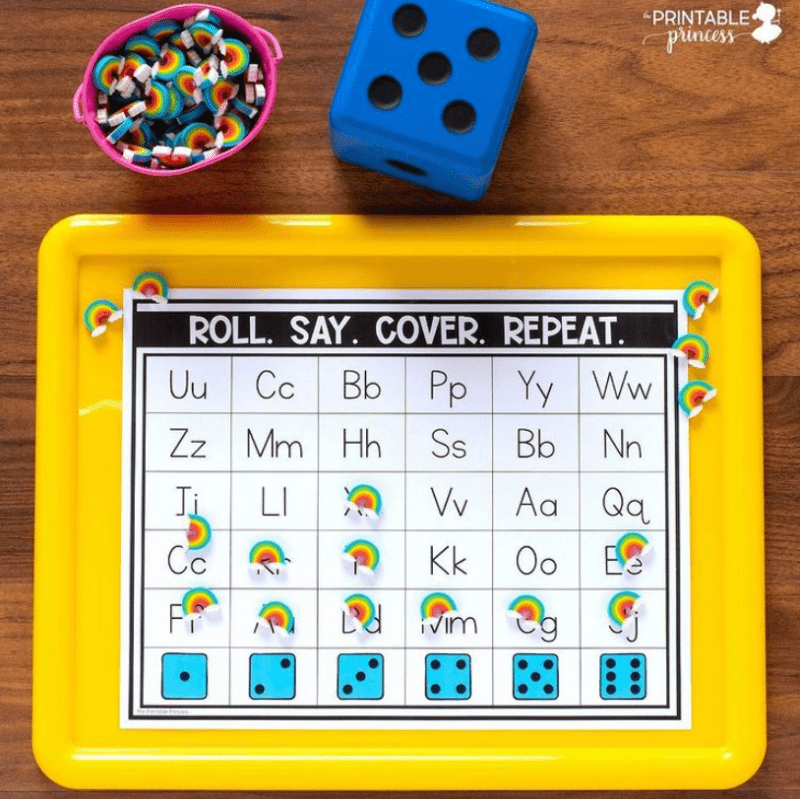
Make it a race to meet which cavalcade "wins" or brand it a fill-the-board claiming. Here'southward another flexible upgrade to traditional bingo games.
Source: @theprintableprincess
5. Curlicue & read words.
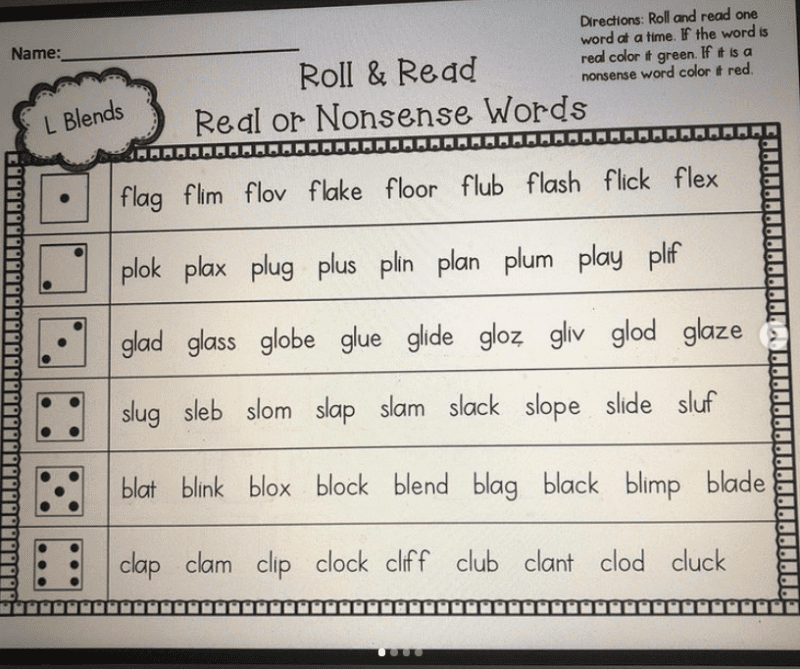
For another low-prep center using dice, try this idea for word reading—nonsense or existent! Just copy different lists on different paper colors to differentiate.
Source: @tastefullyteaching
6. Read it and keep it.
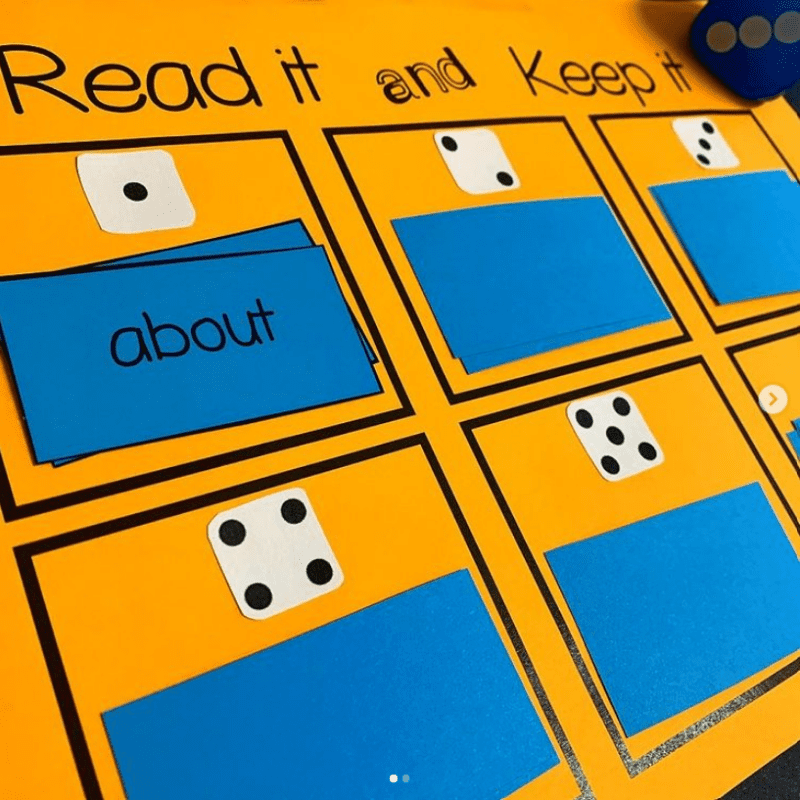
Nonetheless another take on a dice-rolling center, this i is so piece of cake to prep and customize for different kiddos' needs.
Source: @teachingwithmissle
7. Unlock learning with locks and keys.
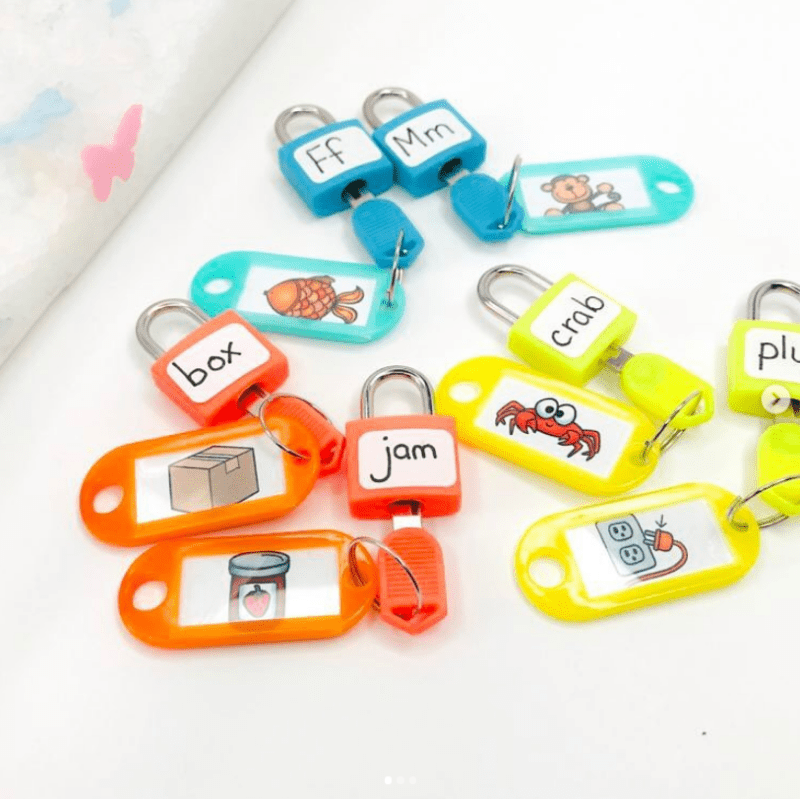
What student wouldn't want the chance to open a bunch of padlocks?!
Source: @differkinder
viii. Find letters or words in a sensory bin.
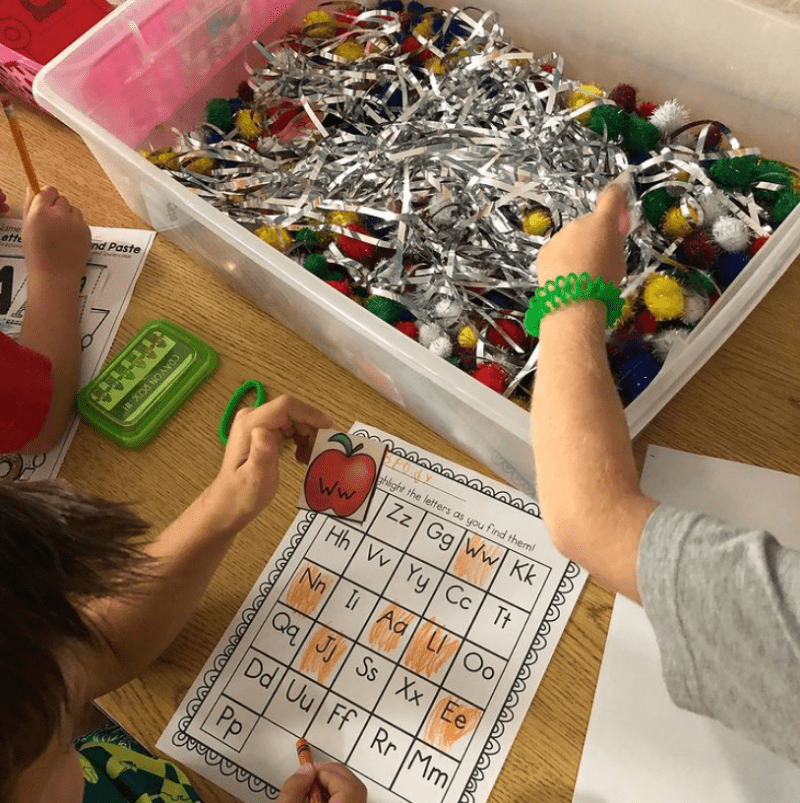
Sensory bins are crawly for play, science, and more than, but if you're struggling to fit them into your mean solar day, turning one into a search-and-discover literacy center is a win-win option!
Source: @kinderwithmrsbrooks
9. Race the fidget spinner.

Make fidget spinners piece of work for you with this fun idea that'southward adjustable for whatever words.
Source: @atlantareading
10. Practice writing on magnetic drawing boards.
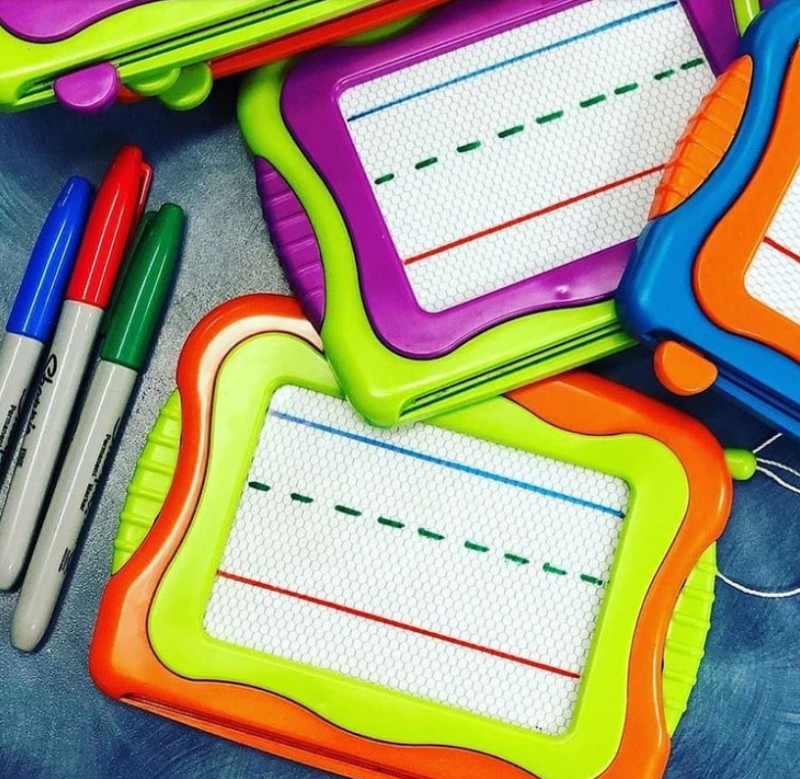
Whether your students demand practice writing individual letters or words, calculation guidelines with Sharpies is an amazing teacher hack!
Source: @teaching_in_canada
11. Level upwardly tic-tac-toe.
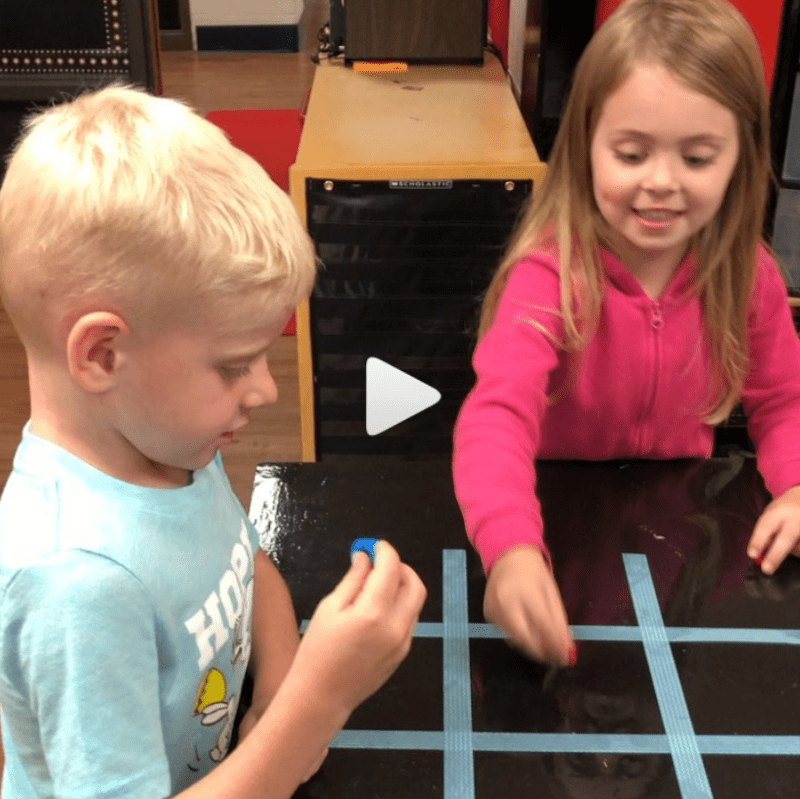
This spin on a archetype partner game is ambrosial, effective, and so piece of cake to prep!
Source: @kinderkish
12. Spoon up some phoneme manipulation.
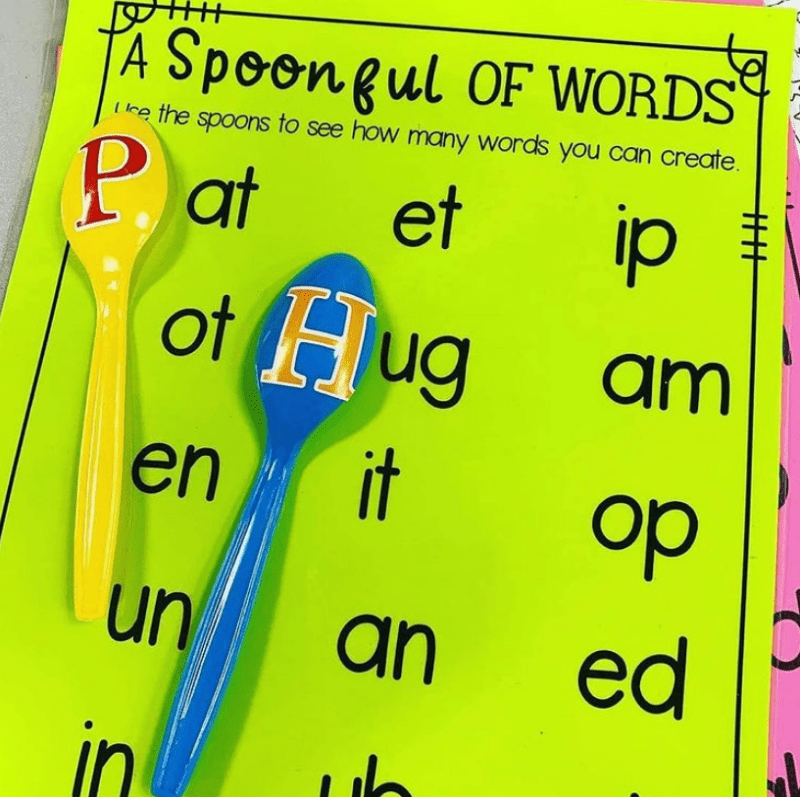
Turns out a plastic spoon is perfectly sized and shaped to help piffling easily swap start letters!
Source: @topteacher
13. Stack cups with a plan.
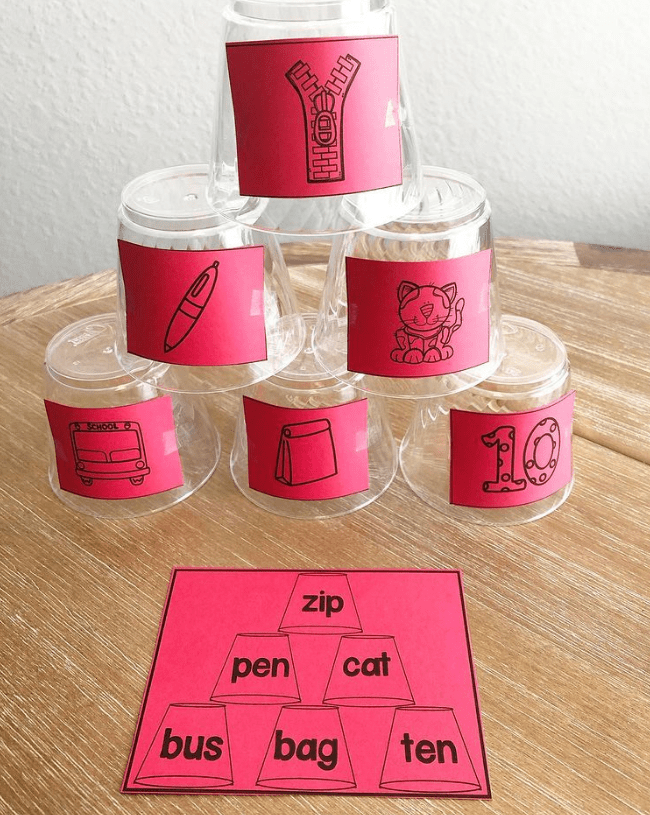
This would exist perfect for synonyms or matching vocabulary words to pictures, too.
Source: @erikadeane315
14. Take your word piece of work to the wall.
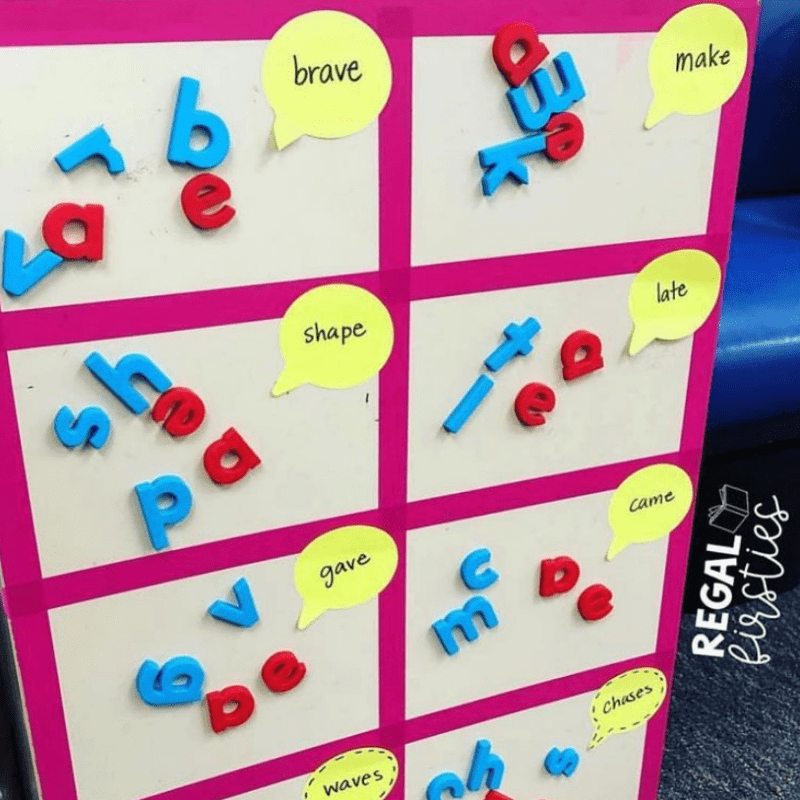
This setup makes it super like shooting fish in a barrel to update words equally needed.
Source: @lucyjaneloveslearning
15. Solve a hands-on discussion scramble.
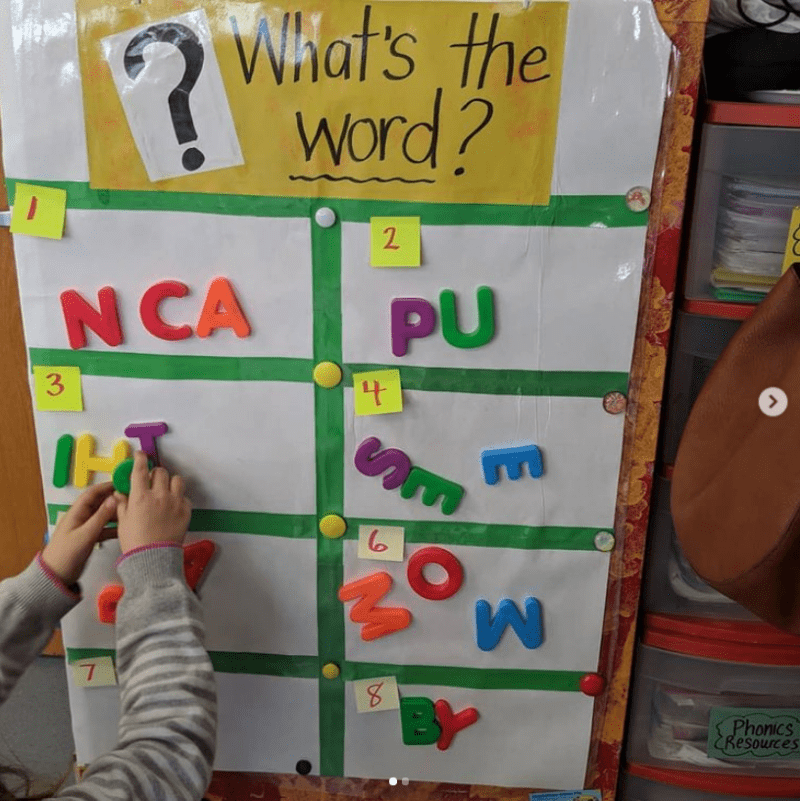
Magnetic letters are perfect for moving effectually while trying to solve a scrambled word. Having each discussion in its ain box keeps it organized.
Source: @teachinginthe401
16. Play Snakes & Ladders.
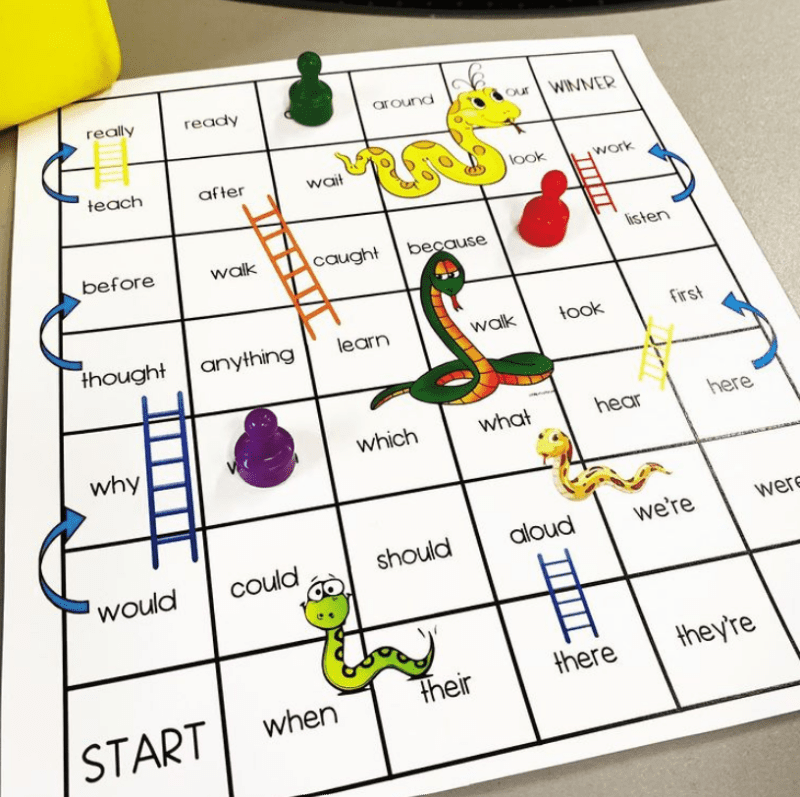
Y'all tin't go wrong with this literacy-themed version of the archetype board game.
Source: @teachingwithmissle
17. Apply a punctuation "surgery kit" to edit sentences.
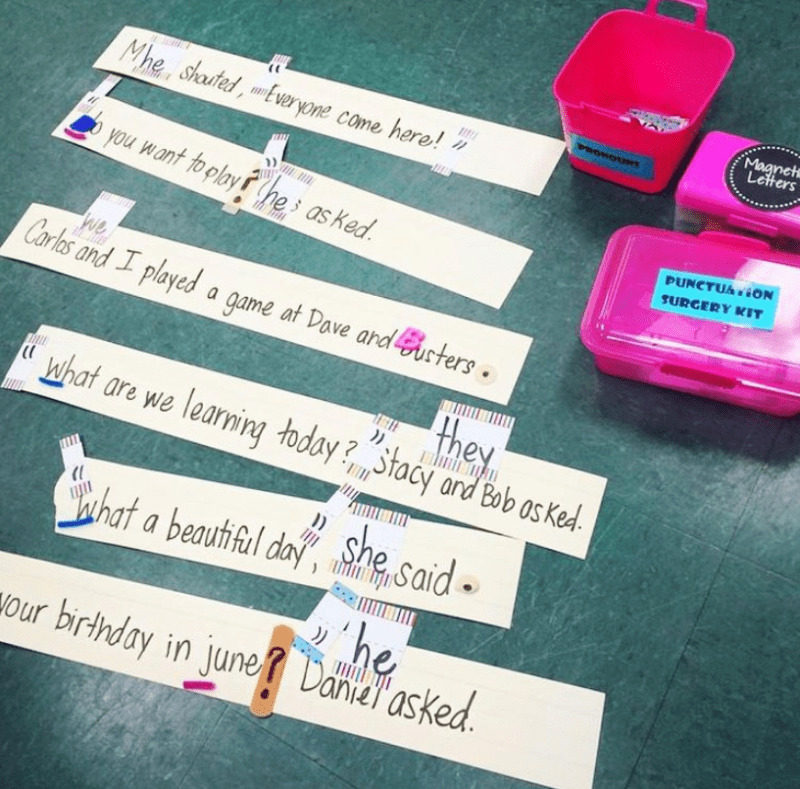
Because healing erroneous sentences may help heal the world. (P.Southward. Including Band-Aids is the perfect touch!)
Source: @sweettoothteaching
eighteen. Read in different voices.
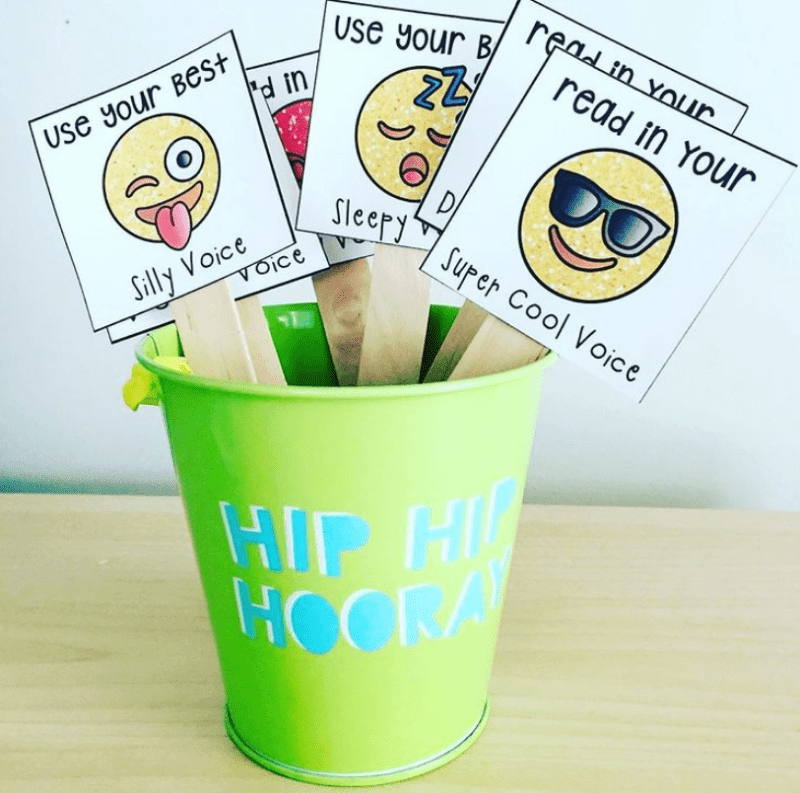
We honey this idea for fluency practice with a familiar poem!
Source: @atlantareading
xix. Follow a color code using dot paints.
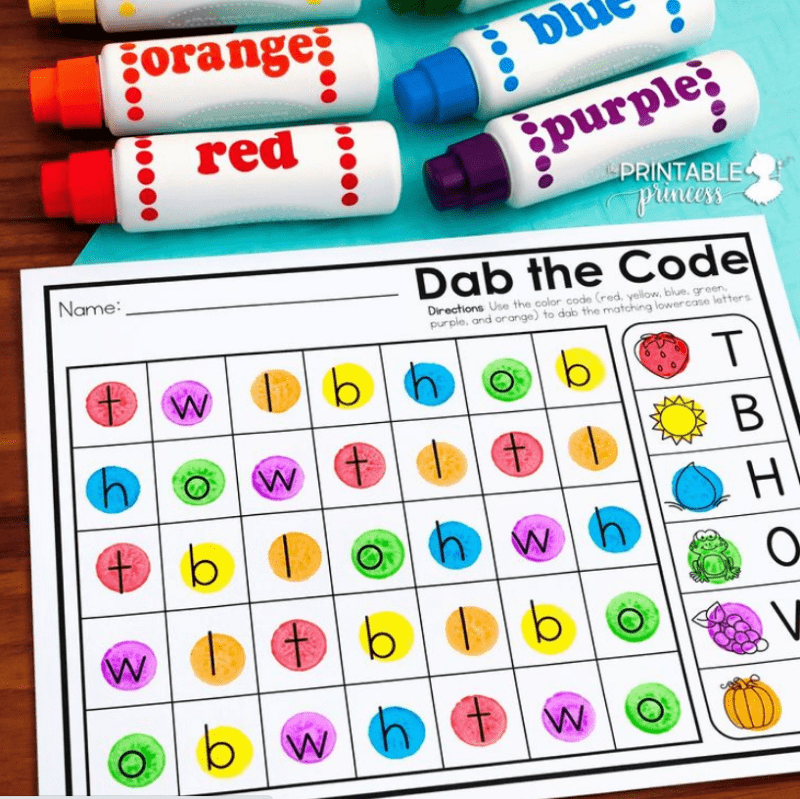
Mess-gratuitous painting with a literacy twist? Sign united states of america up.
Source: @theprintableprincess
twenty. Play Bear Cave.
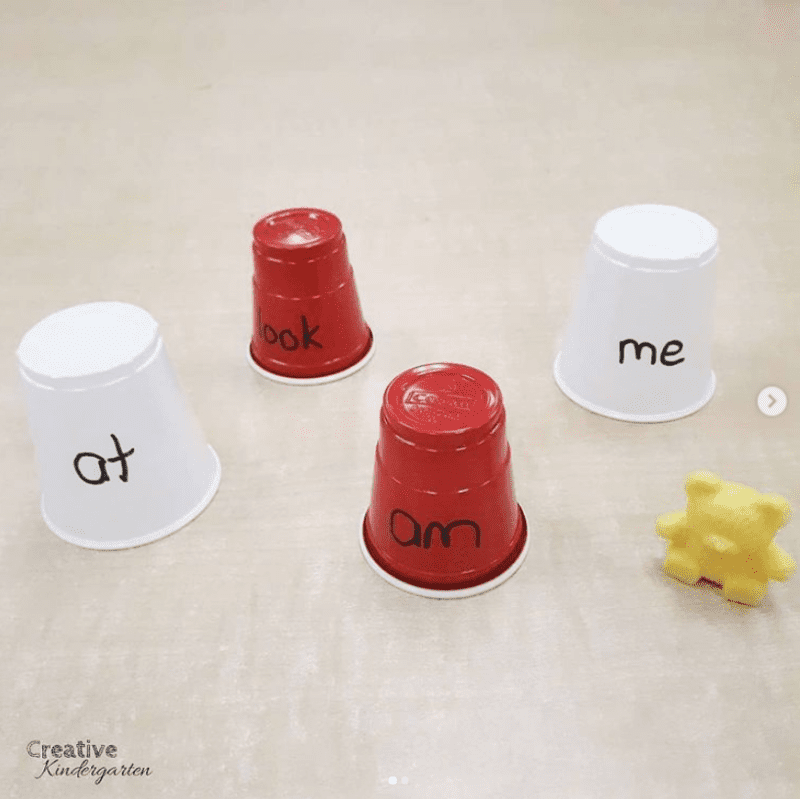
Y'all tin't become much simpler than the setup of this oversupply-pleasing partner game.
Source: @creativekindergartenblogonptp
21. Answer to a book using loose parts.

Kids this age all the same need to play! Set out loose parts and mats for them to answer a reading response question creatively, like this ane for "What do yous love about fall?"
Source: @creativekindergartenblogonptp
22. Utilise props to exercise retelling a familiar story.
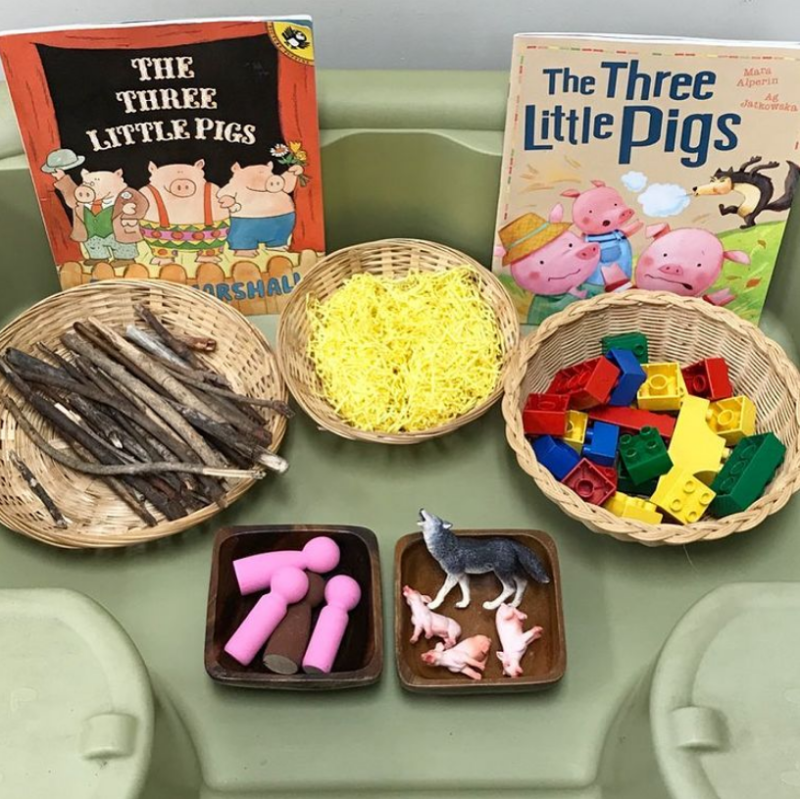
Support reading comprehension with a simple storytelling center tied to a classroom read aloud.
Source: @playexplorelearn
23. Read it and depict it.
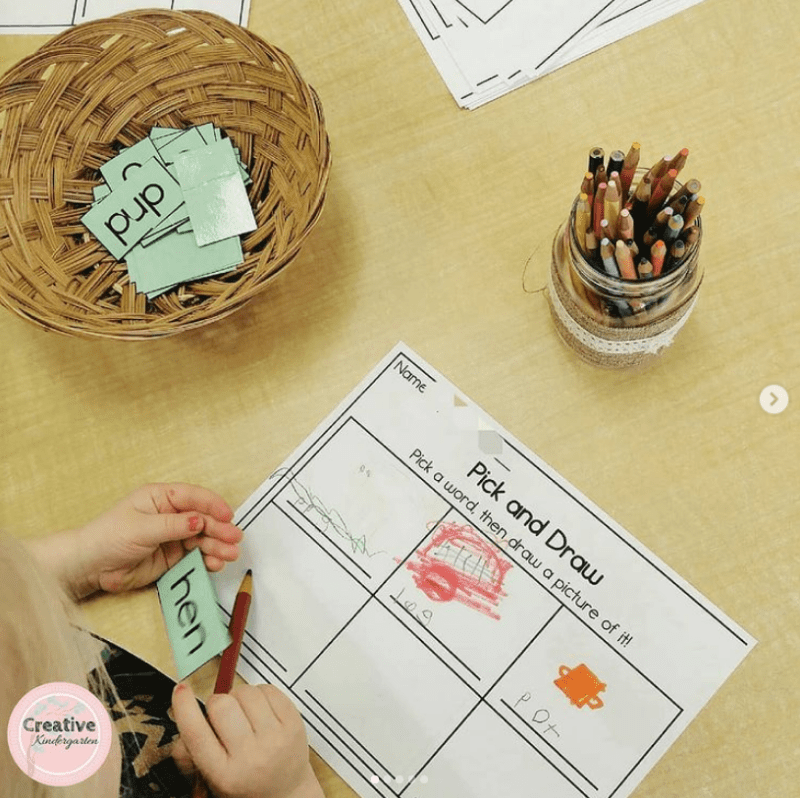
Do reading phonics-based or vocabulary words and emphasize pregnant.
Source: @creativekindergartenblogonptp
24. Find it and hole-punch it!
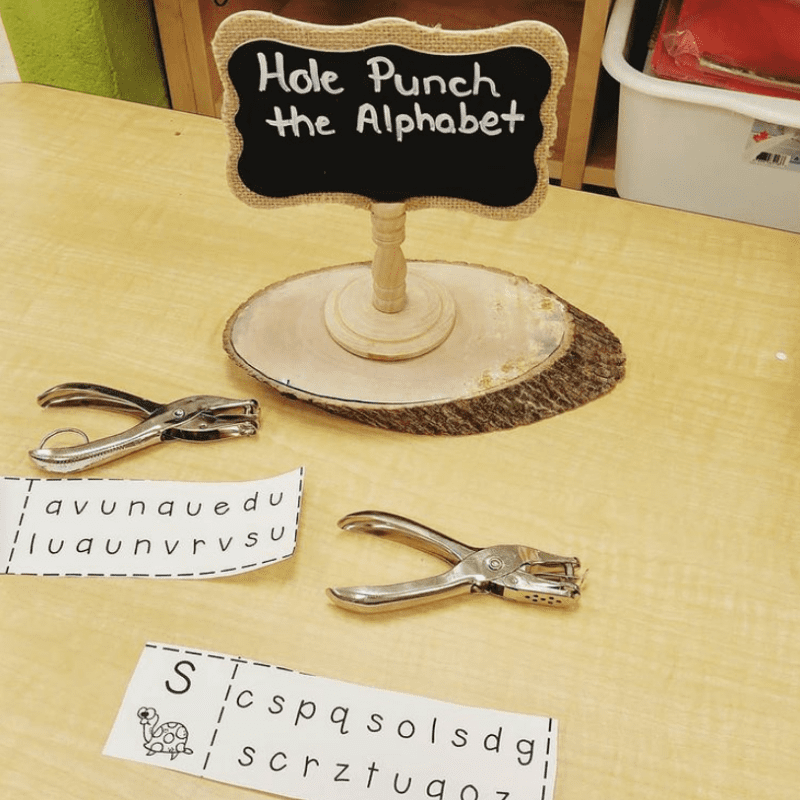
Find letters or words on a list and mark them with a tool that children love. (All that squeezing is great for edifice paw strength, too.)
Source: @creativekindergartenblogonptp
25. Spell with nuts and bolts.
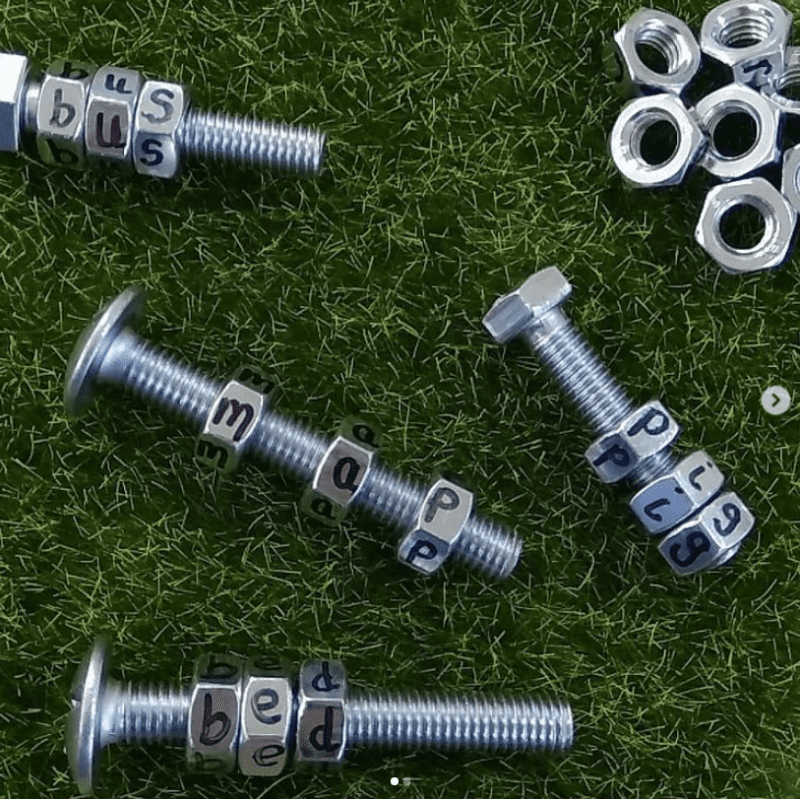
For some other way to mix word work and strength building for little fingers, just hit the hardware shop.
Source: @senteacherireland
26. Mark answers with clothespins.
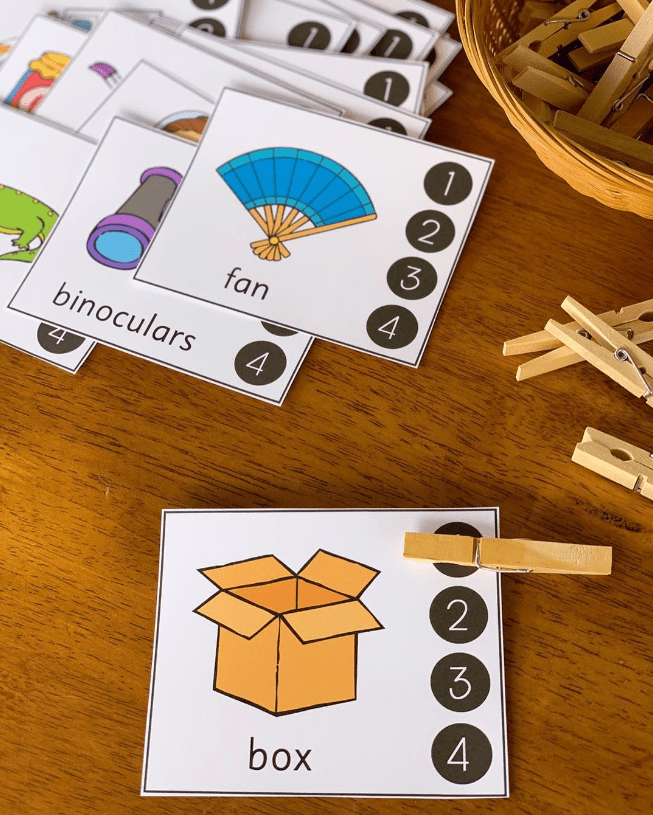
Clipping a clothespin to an respond on a carte du jour engages students, avoids a paper worksheet, and acts as however another fine motor booster all at one time!
Source: @youclevermonkey
27. Make give-and-take study magical with white crayons.
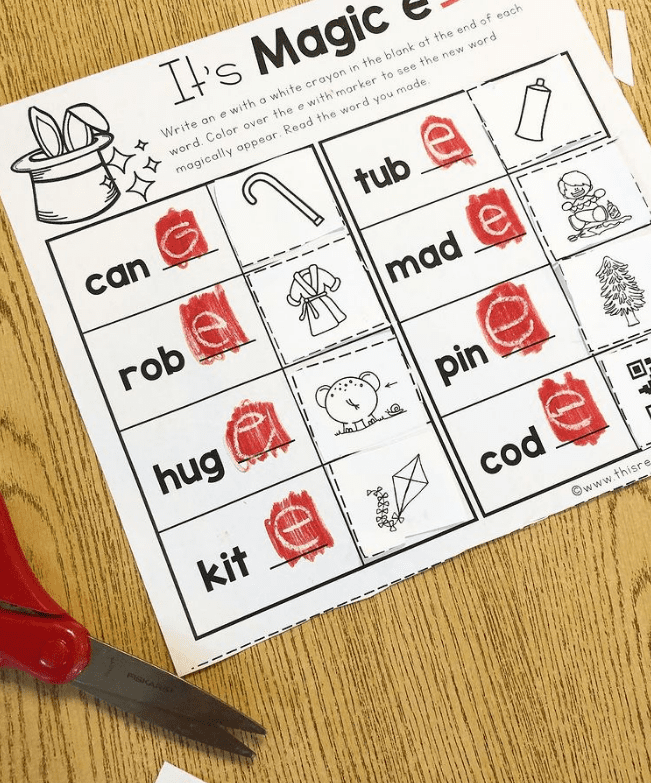
The simple thrill of writing words or word parts in white crayon and coloring to reveal the "magic" writing never gets old.
Source: @bklandadventures
28. Characterization it.
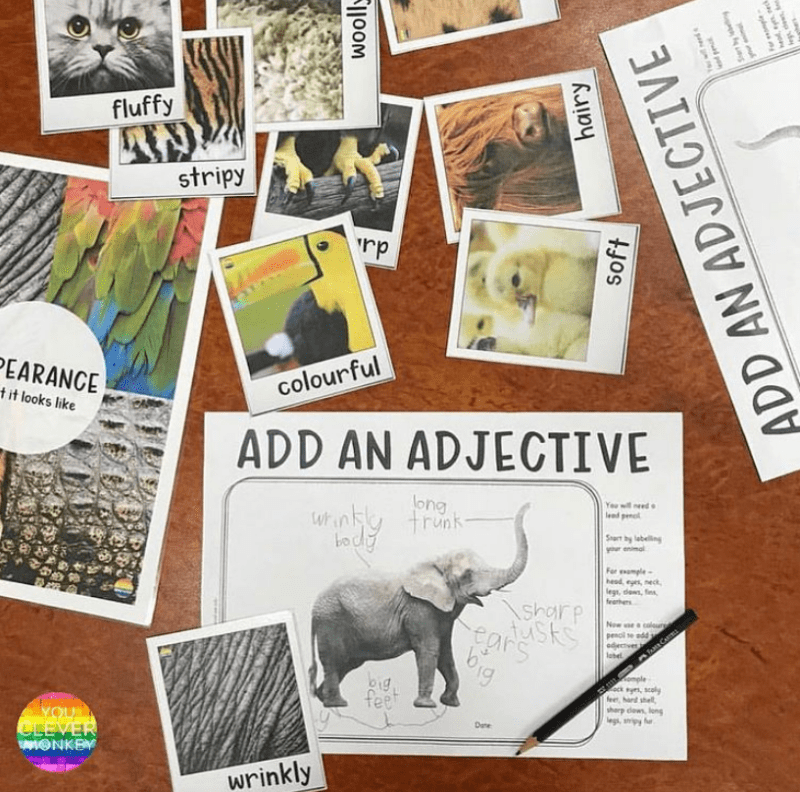
Have students label the components of a picture while they work on invented spelling or, as to a higher place, using descriptive language.
Source: @youclevermonkey
29. Build words with puddle noodle segments.
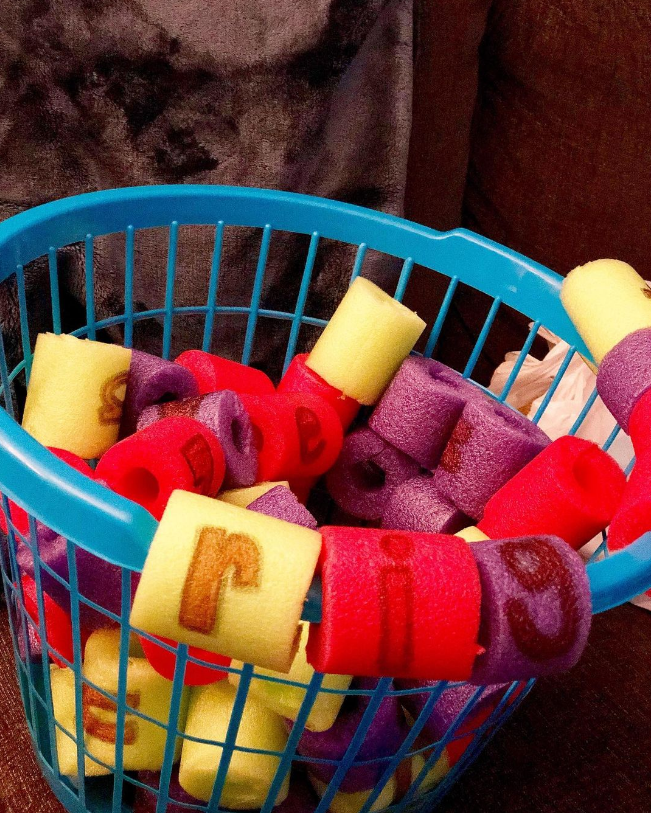
The laundry handbasket makes this a self-contained and portable activity.
Source: @gardenstateteaching
30. Use sound knowledge to fissure the code.
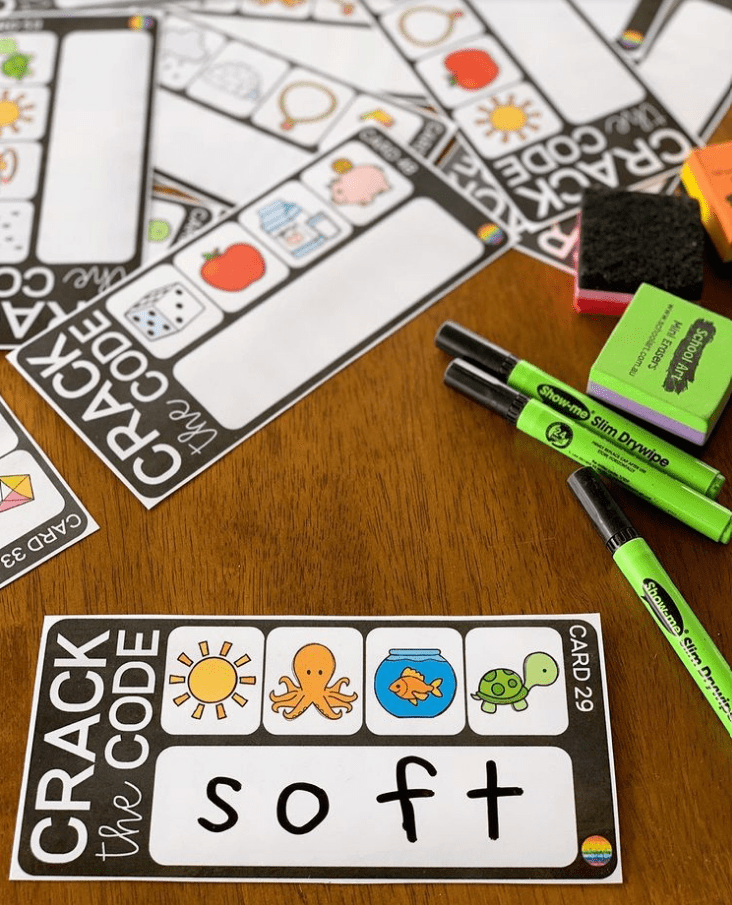
Cloak-and-dagger codes make anything more fun. Leave messages in pictures for children to solve using their knowledge of letters and sounds.
Source: @youclevermonkey
31. Practice segmenting and blending with slinky sounds.
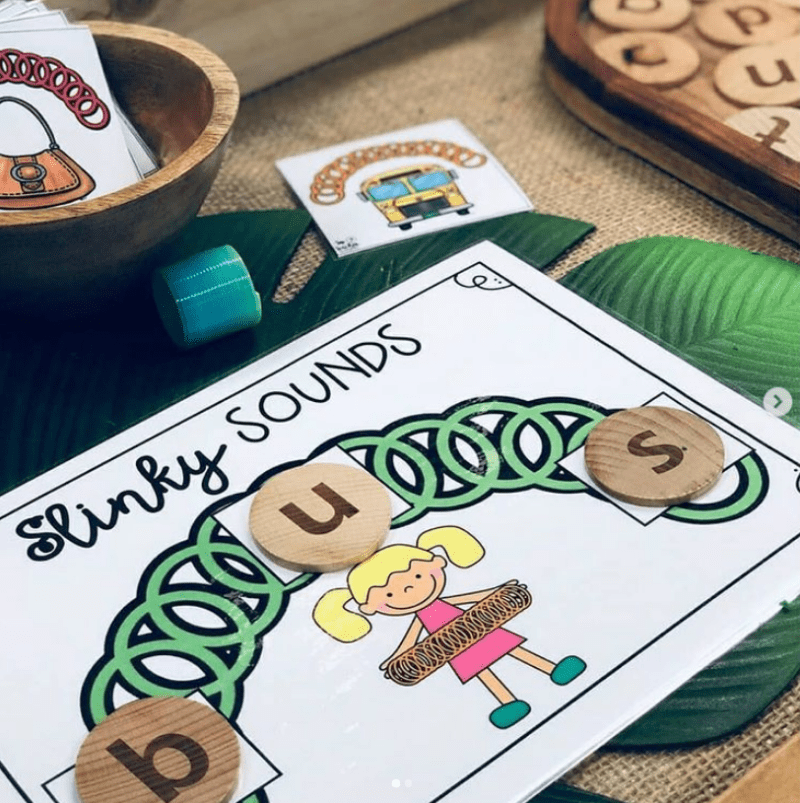
Use the analogy of the classic toy that grows and shrinks to aid children practice stretching words to spell them or blending sounds to make words.
Source: @topteacher
32. Build sentences at a pocket chart.
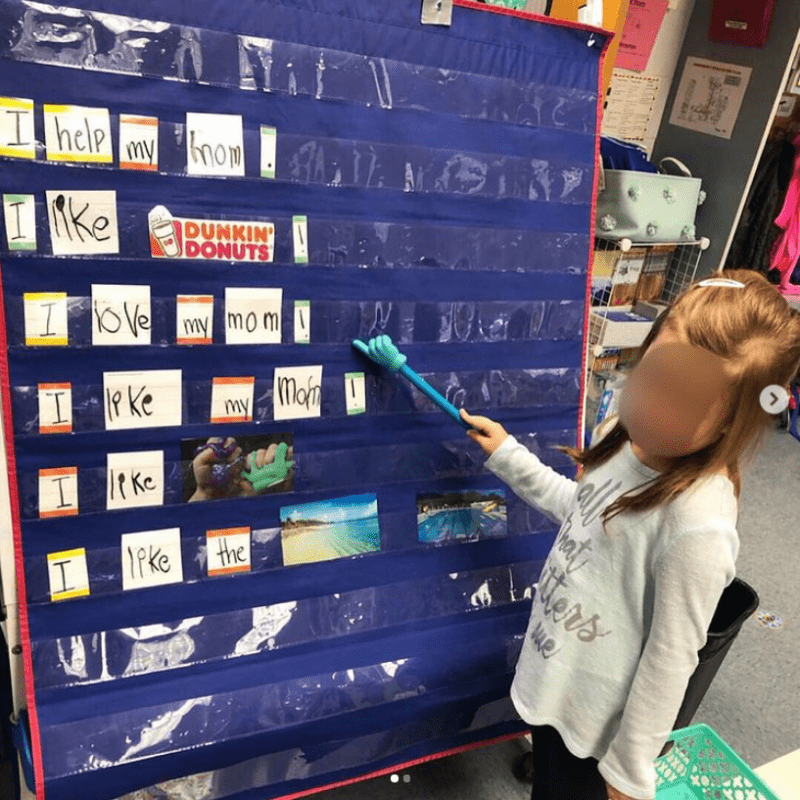
Including environmental print and picture cards allows fifty-fifty emergent readers to make interesting sentences!
Source: @thekeystokinder
33. Mix and fix sentences.
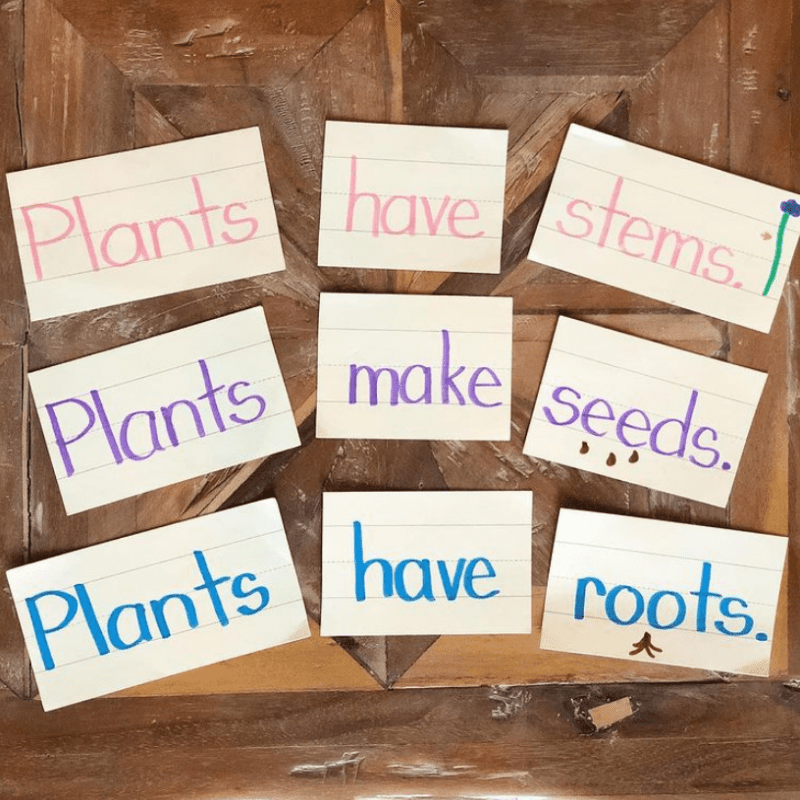
Work in your content surface area vocabulary for an extra boost of learning!
Source: @teachingwithoutfrills
34. Build chemical compound words with blocks.
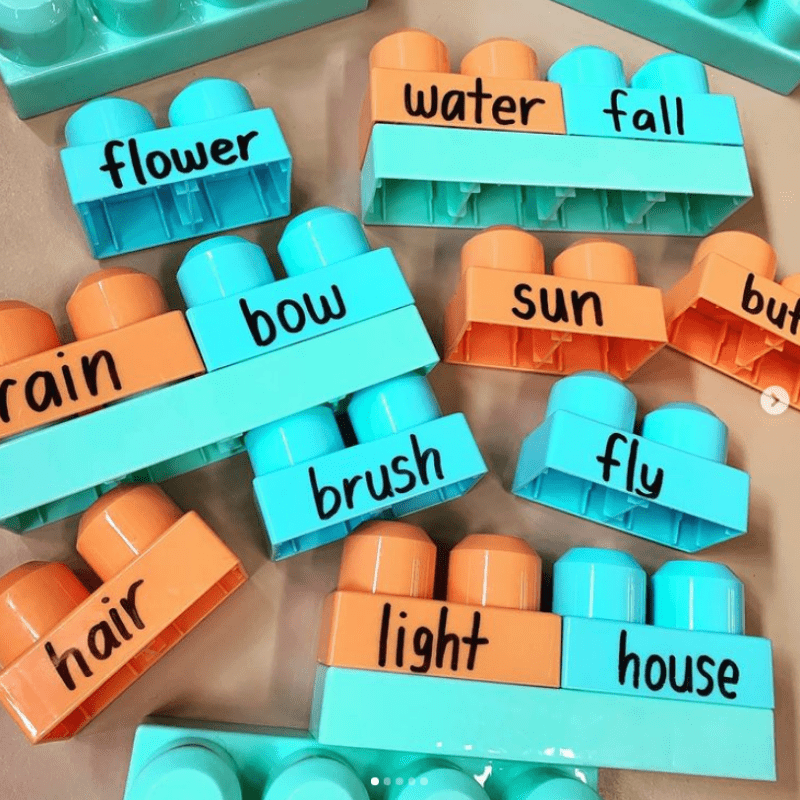
Ask students to build existent compound words and and then challenge them to spell and draw the silliest fabricated-up ones they can think of, too.
Source: @teachingwithmissle
35. Or, use blocks to build contractions.
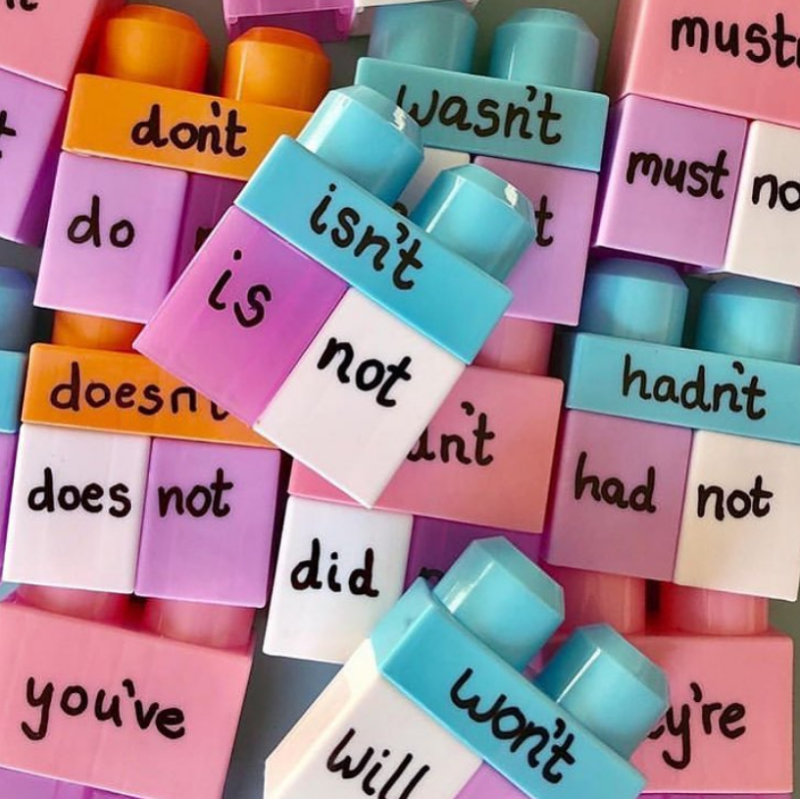
Clear up confusion on this tricky topic in one case and for all with a hands-on approach.
Source: @firstgradefinds1
36. Play Vocabulary Pictionary.
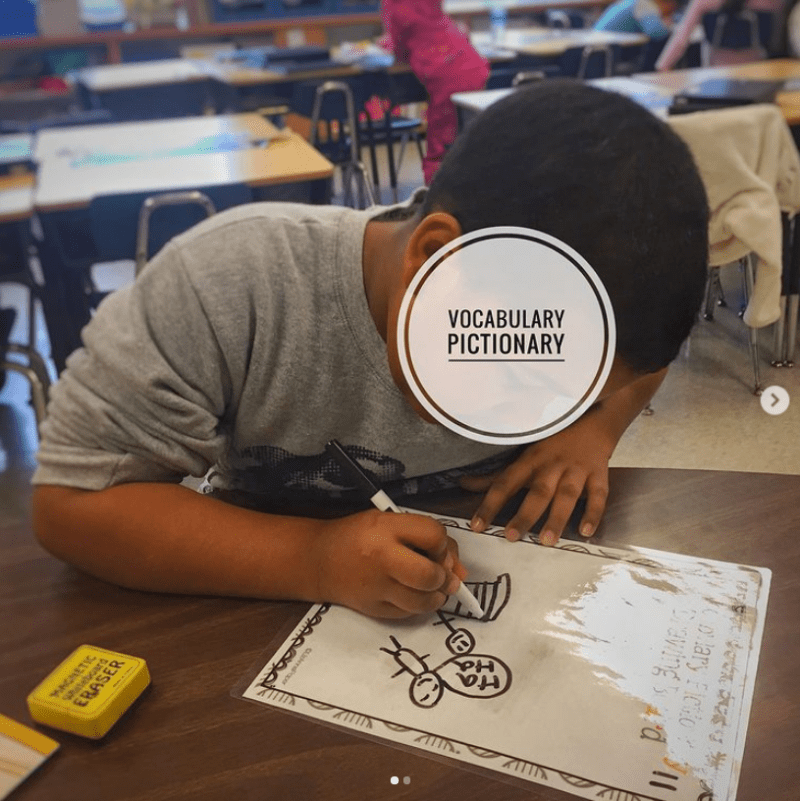
This classic game works so well as a partner center.
Source: @elizabethannespires
37. Chase for words in an accurate text.
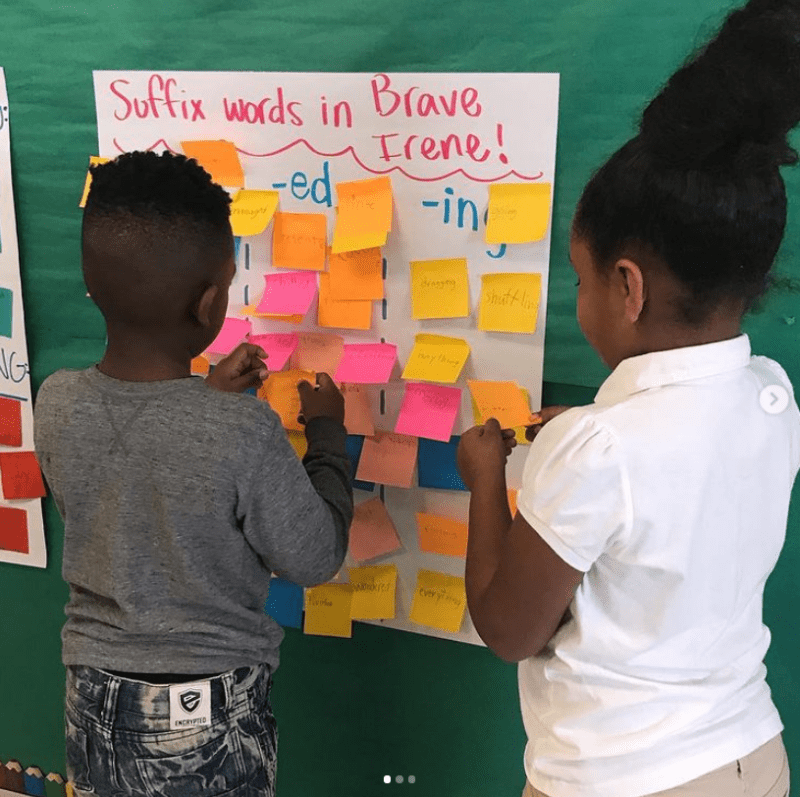
Set out books, a piece of titled chart paper, and a stack of viscid notes, and you're proficient to go for an engaging and authentic center activity. To differentiate, offer a few different book choices.
Source: @saturdays_off
What are your favorite literacy centers for Thou–two students? Share them over at ourWeAreTeachers HELPLINE group on Facebook.
Besides, don't miss: 40 Creative and Simple Sight Discussion Activities for the Classroom

Source: https://www.weareteachers.com/literacy-centers-ideas/
0 Response to "Family Literacy Night Kit Editable for 2nd Grade"
Post a Comment